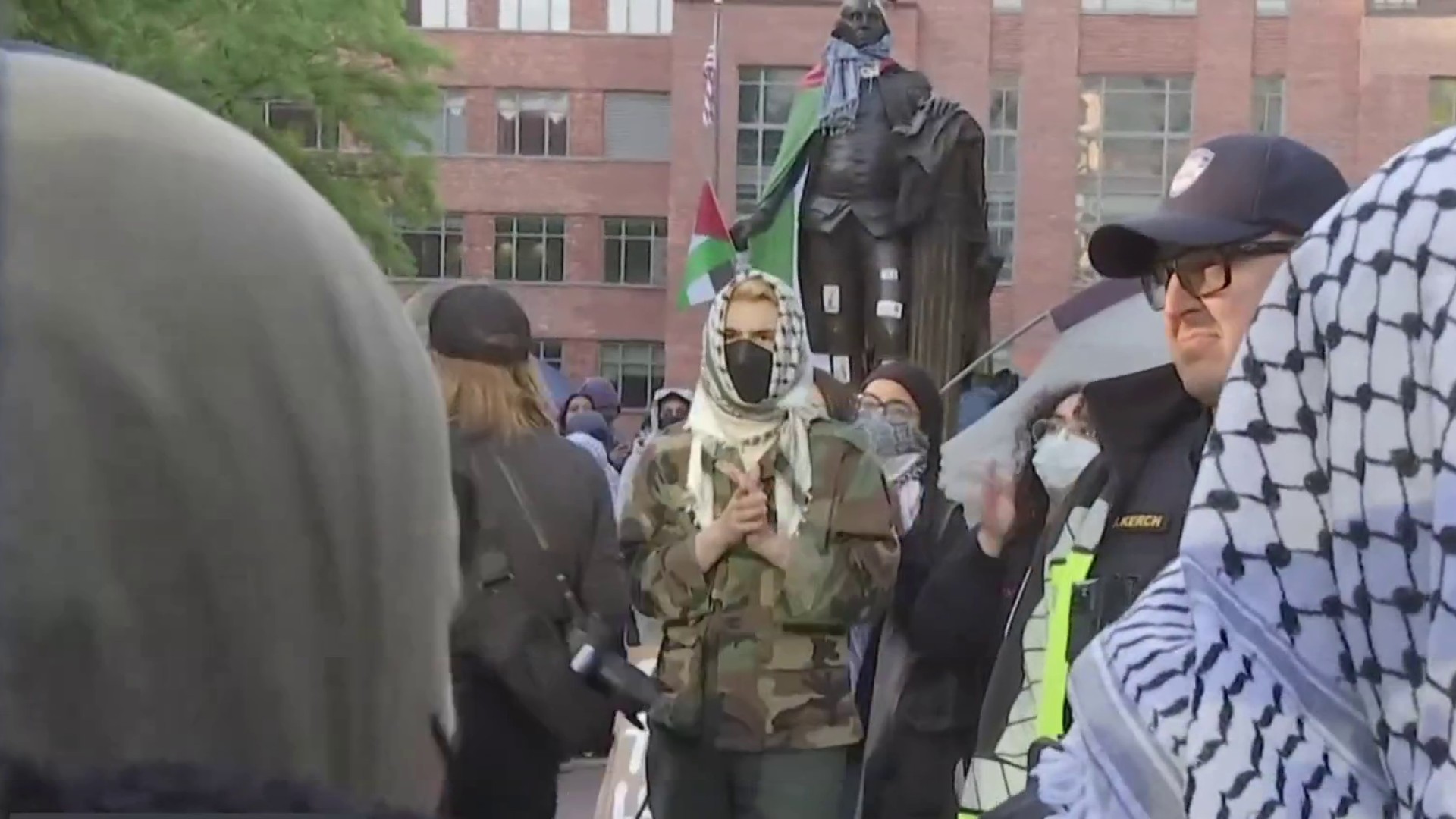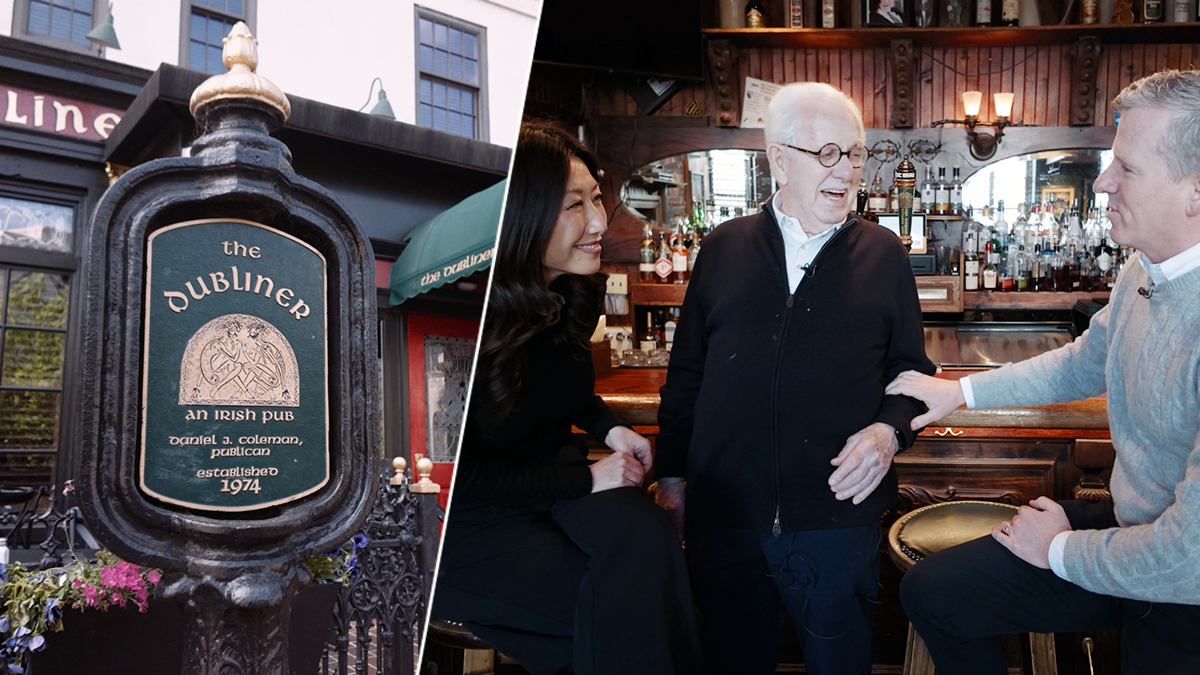Decades after the original Washington Senators moved west to become the Minnesota Twins, two old friends return to the site of Griffith Stadium, where they worked as a teenagers.
Walking into a conference room on the first floor of Howard University Hospital, two life-long friends stopped in their tracks.
"Wow! There you are, Ed," retired Judge Bill Turner said, pointing to a large picture of a freckle-faced lad peering out of a slot in the Griffith Stadium scoreboard.
"There you go, guys," Ed Baruch said with a laugh. "That's me, that's me. I'm the boy in the scoreboard."
The picture on the wall is one of two pictures that tell the stories of two boys, their love of baseball, their dreams and their disappointments.
One picture almost cost an aspiring baseball talent his career; the other led to a rollercoaster of emotions spanning 60 years.
Their stories began in 1956, when Bill and Ed were in high school -- Baruch at Bethesda-Chevy Chase and Turner across the county at Montgomery Blair.
Local
Washington, D.C., Maryland and Virginia local news, events and information
They grew up in the suburbs of the nation's capital, and their paths first crossed when the two teenagers worked at Griffith Stadium for the Washington Senators.
"I was the batboy for the Senators from 1956 to 1959," Turner said outside Howard University Hospital, the site of Griffith.
"I was the boy in the scoreboard," said Baruch, now a television executive.
The two men, both with cherished memories and a lifetime of great stories from Griffith, hadn't been back to this neighborhood in more than 50 years.
"I haven't been here since '56," Baruch said.
For Turner, his last time there was 1959 after working his last game as the bat boy for his heroes.
"When they were tearing down the building, I said I don't want to see that, so I didn't come down. But I'm sure glad I came down today," Turner said.
The two men returned to Georgia Avenue on a recent morning to share their stories of the two pictures.
For Ed Baruch his picture was a chance at his 15 minutes of fame. Life Magazine was calling.
"I have no idea how Life Magazine picked BC-C," Baruch said, "but these forms came around to the junior class asking what does a kid do between his junior and senior year of high school."
Baruch had a good answer for Life.
"Running the scoreboard at Griffith Stadium for the Washington Senators," he replied.
Life sent White House photographer Hank Walker, who would later be remembered for his iconic silhouette of JFK and RFK. Walker photographed Baruch with the players, team managers and at work in the scoreboard.
"So I was a star for a day," Baruch said standing beneath his picture on the wall at Howard, which hangs just steps from where home plate was. The spot is designated with a batters box in the hallway floor. Walker had Baruch set up the scoreboard and poke his face out for the picture.
Baruch, his family and the team waited patiently for the pictures to appear. "We were so excited," Baruch said, looking at the floor, "and then the letter came."
A two paragraph letter on Life Magazine letterhead from staff correspondent Clay Blair Jr., who would later become editor of the Saturday Evening Post. The letter began, "Dear Ed, We regret ..."
Baruch didn't have to read on, the feature wasn't going to run. Nobody was going to see the boy in the scoreboard. Blair sent Baruch the pictures, thanked him and asked him to send him future story ideas.
Baruch lost the pictures but still has the letter.
"Very disappointing," he said, clutching the letter. "The pictures with me and the players, it would have been a great story. In fact, let’s do the story."
Baruch said there's another story behind the picture. The score and the moment are not from a real game.
"It's staged," he said. "The photographer had me set it up, so of course I have Washington up 5 in the first."
In fact, Washington didn't play Boston that day as the picture depicts.
Before walking into the hospital conference room, Baruch had no idea anyone else even knew or cared about the boy in the scoreboard photo.
"When I walked in the room, shock," Baruch said. "I had no idea there was anything like that, there I am, the boy in the scoreboard."
For Bill Turner, walking into the hospital conference room was a wave of emotions. The wall of the room is peppered with archival photos that tell the story of Griffith Stadium.
The batters box is on the tile of the first floor hallway between the orthopedic surgery and nuclear medicine offices.
"It brings back a whole lot of memories," Turner said, extending his right hand over home plate like he had so many years ago. "I feel like standing here with my hand out with Sievers, Killebrew or Allison or Lemmon having just hit a home run."
As batboy for all those great sluggers and more, Turner was often at home plate to greet the triumphant home run kings. And he has a scrapbook full of pictures to prove it. Newspaper clippings, home run after home run chronicled by the local press, and in every picture there's young Billy Turner at the plate to shake their hands.
It was one of those moments at home plate caught by the local papers that almost cost Turner his baseball career.
"I wanted to be a major league ball player from the minute I could remember," he said.
In 1958, Turner, a junior, was well on his way to his dream -- a starting pitcher for Montgomery Blair High School with his sights set on playing in college and then going on to the next level.
In addition to school and baseball practice, Turner worked at Griffith, first selling hot dogs, then as a bat boy earning $2.50 a game.
"The last two years I made $5 a game, and my last year in 1959 I pitched batting practice for the pitchers, and they gave me an extra $5," he said.
Turner's dream was coming true; he was getting paid by a major league team.
"Believe me," Turner said, “I would paid them to do it."
Then came Opening Day 1958. Washington Senators powerhouse hitter Roy Sievers was reigning home run champ.
Sievers, who would always give the batboys a pat on the head, was one of Turner's heroes, and Opening Day was his favorite day.
"I wouldn't miss it for the world," Turner said. "Mom knew I enjoyed it, so she wrote me a note so that I would be absent from school and practice."
Heading into the ninth inning that day in 1958, Washington was tied 3-3 with Boston. Then Sievers stepped up to the plate.
With a crack of the bat, it was Sievers' first homer of the season.
"I was at home plate to greet him," Turner said. "He came across home plate and we celebrated."
Washington went on to win.
"The next day when I came to practice at Blair, the coach said I'd like to see you," Turner said.
The coach wanted to know why his pitcher missed practice.
Turner explained his mother had given him an excuse to be absent the day before.
Pulling out a copy of the Washington Star, the coach told him he was off the team.
There on the first page of the sports section was Sievers and Turner shaking hands as the home run king crossed the plate. The moment had been captured by Randolph "Ranny" Routt, the sports photographer who would be presented with a White House Photographers Award by President John F. Kennedy two years later.
Turner was disappointed he wouldn't play with his teammates but has no regrets.
"If it was a choice between batboy or playing for the team, I would have chosen batboy," Turner said. "It was a dream come true."
The coach allowed Turner back on the team for his senior year, but only with a promise: No more choosing batboy over practice.
That's something he does regret, Turner said. Keeping that promise, Turner missed Opening Day in 1959. President Dwight D. Eisenhower threw out the first pitch. Another batboy, Turner's life-long friend Jim Ryan, caught it.
"I've always told Jim, half that ball must be mine," Turner said.
Turner went on to pitch for the University of Maryland and then two years in the semipro Shenandoah League, before hanging up his cleats and heading off to law school.
Sixty years after they shared their teen years on the historic field at Griffith Stadium, Bill and Ted remain friends, sharing memories of growing up loving baseball in D.C. As the two stood on the sidewalk trying to picture Georgia Avenue as it was, they were reminded of another part of going to games there: The smell of fresh baked bread from the Wonder Bread factory down the street.
"We'd buy a dozen day old buns for 25 cents and take them into the games," Turner said. The batboys could get free hot dogs at the ballpark, but not free rolls. "They didn't inventory the hot dogs at the concession stands, only the buns."



